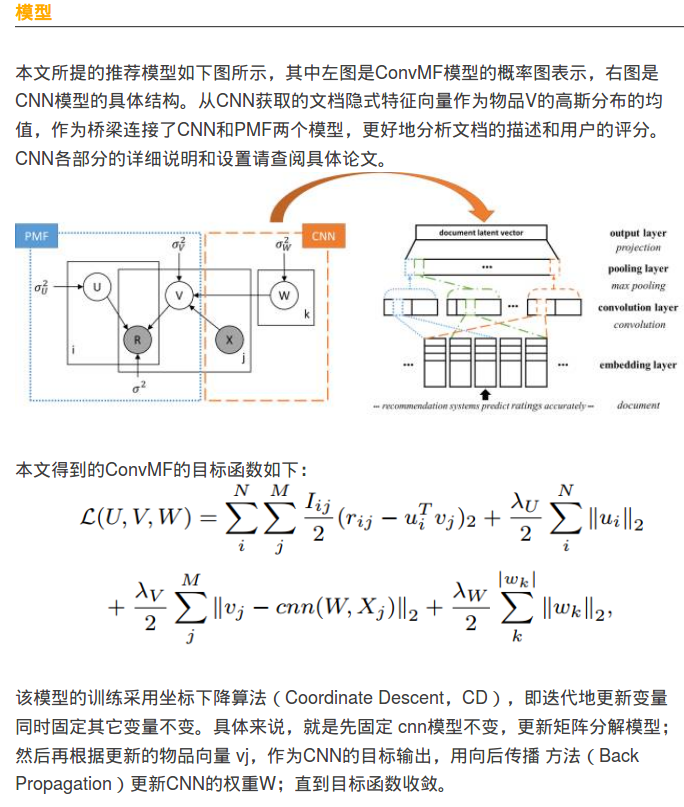可参考librec论文解析 https://mp.weixin.qq.com/s/bu9rSno_WmHHisE3lzYnqg
本文结合了CNN和PMF, 以item side information 为输入,构造CNN,CNN的输出就是隐向量V_j, V_j 也是常规PMF里的item latent vector; 因此他就成为了一个链接CNN和PMF的桥梁.

值得研究的地方:
| 文献题目 | 去谷歌学术搜索 | ||||||||||
| Convolutional Matrix Factorization for Document Context-Aware Recommendation | |||||||||||
| 文献作者 | Donghyun Kim 1 , Chanyoung Park 1 , Jinoh Oh 1 , Sungyoung Lee 2 , Hwanjo Yu ∗1 | ||||||||||
| 文献发表年限 | 2016 | ||||||||||
| 文献关键字 | |||||||||||
| Collaborative Filtering; Document Modeling; Contexual Information; Deep learning; CNN | |||||||||||
| 摘要描述 | |||||||||||
| Sparseness of user-to-item rating data is one of the major factors that deteriorate the quality of recommender system. To handle the sparsity problem, several recommendation techniques have been proposed that additionally consider auxiliary information to improve rating prediction accuracy. In particular, when rating data is sparse, document modeling-based approaches have improved the accuracy by additionally utilizing textual data such as reviews, abstracts, or synopses. However, due to the inherent limitation of the bag-of-words model, they have difficulties in effectively utilizing contextual information of the documents, which leads to shallow understanding of the documents. This paper proposes a novel context-aware recommendation model, convolutional matrix fac- torization (ConvMF) that integrates convolutional neural network (CNN) into probabilistic matrix factorization (PMF). Consequently, ConvMF captures contextual information of documents and further enhances the rating prediction accuracy. Our extensive evaluations on three real-world datasets show that ConvMF significantly out- performs the state-of-the-art recommendation models even when the rating data is extremely sparse. We also demonstrate that ConvMF successfully captures subtle contextual difference of a word in a document. Our implementation and datasets are available at http://dm.postech.ac.kr/ConvMF. | |||||||||||